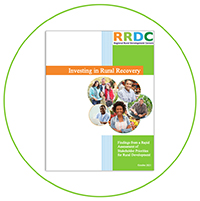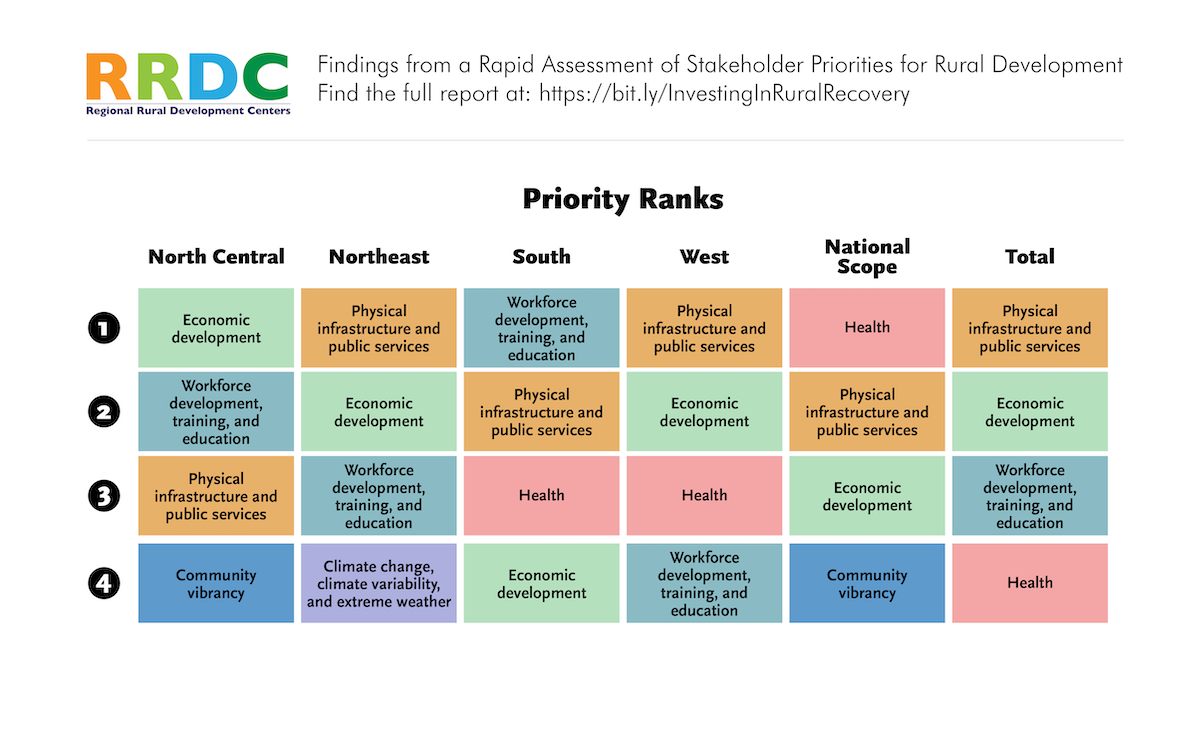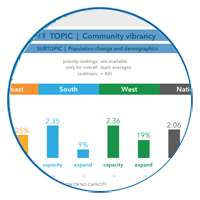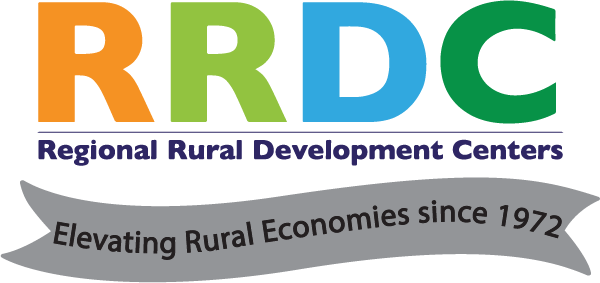Investing in Rural Recovery: Executive Summary
In the wake of multiple chronic challenges exasperated by the COVID-19 pandemic, rural communities and small towns across the United States are beginning to build back from the associated impacts on their economies, workforces, and communities. These efforts at recovery pose critical questions of where and how to invest. To identify where stakeholders engaged in rural development see the greatest need and the greatest opportunity, the Regional Rural Development Centers have begun to collect feedback through a Listening Sessions Initiative. The first step in this process was a survey through which key rural development implementers and other stakeholders could provide baseline feedback. This report provides findings from that rapid assessment activity.
The topics of physical infrastructure and public services; economic development; workforce development, training, and education; and health were identified as the highest priorities for rural communities to address in the next five years. Critical issues within these priorities include advancing broadband access, fostering equitable and inclusive growth, supporting entrepreneurship among socially disadvantaged minority groups, and improving public health including availability and access to medical services. For these issues, and others identified within the report, investments have the greatest potential to fulfill expressed interest in expanded programming among rural development practitioner organizations. There is also a high degree of interest among these organizations in expanding programming related to rural innovation and small businesses, promoting racial understanding within communities, supporting local and regional food systems, developing new markets for agricultural products, capturing the value of sustainable farm practices, planning for resilience, addressing disparities faced by minorities in program access, and enhancing youth development and engagement (including retention in rural areas). For those issues, however, relatively high capacities exist that likely can be maintained by continued investment.
Analysis of qualitative feedback provided through open-ended questions in the survey highlights deep connections between and across issues. Using the Community Capitals Framework helps explain how interventions that build foundational capacities – such as infrastructure, social networks, and scientific knowledge – among rural communities are likely to address several topical areas at once. In this report, the Regional Rural Development Center research team (RRDC) identifies preliminary themes representing these foundational capacities that emerged from stakeholder responses to questions on assets, challenges, and opportunities for each of the eight topical areas contained within the survey.
Results also highlight the kinds of activities and programming that are likely to have the greatest value in supporting rural development practitioners’ work. These include providing technical assistance in identifying and pursuing funding, showcasing programs of excellence in community and economic development, and coordinating multi-state Extension teams. Formal training on community and economic development topics and targeted funding for both integrated research extension and multi-state collaborations were also highly valued in select regions. Investments in these activities are likely to build general organizational capacity to address priority topics.
Regional differences do exist, however, and should be taken into account when planning programmatic interventions. For example, in the Northeast addressing issues of climate change replaces health as one of the top four priorities, while in the North Central region (i.e., Midwest) promoting community vibrancy is among the most pressing topics. Capacities, interest in expansion, and valued activities all show similar regionality. These differences are best explored in future detailed regional briefings to act as supplements to the broad view taken in this report.



